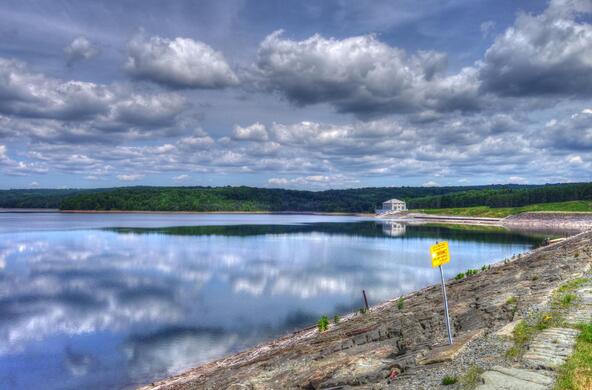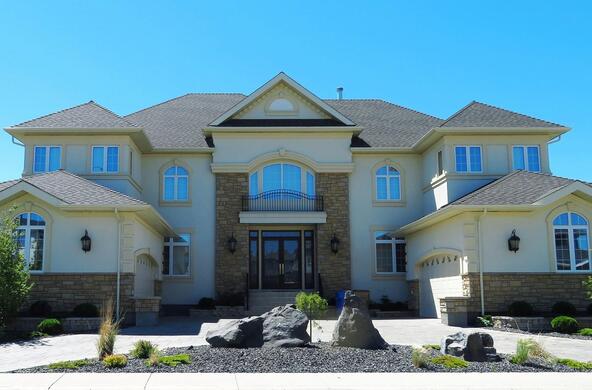James Watt's steam engine vaulted coal to its major role as a fuel for the Industrial Revolution. In more recent years, about 40 percent of the world's electricity has been generated in coal-fired power plants, consuming more than 80 percent of the coal mined each year.
Combustion of coal produces carbon dioxide and other air pollutants, so efforts to combat climate change now seek alternatives to coal. Natural gas is cleaner and less expensive, but like coal, natural gas returns fossil carbon to the atmosphere, upsetting the global carbon cycle and climate.
Recently attention has focused on woody biomass—a return to firewood—to generate electricity.
There is no question that trees remove carbon dioxide from the atmosphere, and that burning wood returns it. Whether these are complementary processes that offer a carbon-neutral fuel with respect to the atmosphere is hotly debated.
Each year, some 7 million tons of wood pellets are shipped from the United States to Europe, where biomass fuels have been declared carbon-neutral with respect to fulfilling the commitments of the Paris Climate Accord. The current goal for the European Union (EU) is to generate 20 percent of its electricity by 2020 using renewable sources, including burning woody biomass.
In part to revive a languishing forest products industry, the U.S. Congress may also declare wood a carbon-neutral fuel. Even with its withdrawal from the Paris Accord, the U.S. may see a few utilities switch from coal to wood, which has rough price parity with natural gas. The switch could be further incentivized with a carbon tax on fossil carbon (1).
Cutting trees for fuel is antithetical to the important role that forests play as a sink for carbon dioxide that might otherwise accumulate in the atmosphere. Each year about 31 percent of the carbon dioxide emitted from various human activities appears to be stored in forests.
Managed forests store less carbon than their native counterparts (2), so forest harvests will be a source, not a sink, for CO2 in the atmosphere. The energy content of wood is less than for coal, so using wood, CO2 emissions are higher per kilowatt of electricity generated. The emissions of carbon dioxide by burning wood offset CO2 that might otherwise be emitted from fossil fuel combustion (3, 4), but full carbon accounting must also consider how long it takes to restore the carbon pool of forested land that has been converted to CO2 in the atmosphere (5).
Forests sprung up across the southeastern U.S. with the large-scale abandonment of agricultural activities during the Great Depression. At first these forests resulted from natural establishment, but plantations of loblolly and slash pine were soon planted as the favorites of the forest products industry, growing well in the warm, wet climate of the Southeast.
Plantations of loblolly pine achieve a maximum biomass of 125 tons/ha in about 40 years (6). But this species achieves its maximum rate of biomass accrual in about 20 years, so rotations are usually kept short to maintain the most rapid carbon uptake possible.
Thirty four operating and proposed wood pellet plants dot the landscape of the Southeast, each anticipated to receive logs from the region within a 50-mile radius. Maine and the Canadian Maritime provinces also eye the potential for wood pellets to revitalize their forest products industries.
While burning wood adds carbon dioxide to the atmosphere, making wood pellets and fueling the ships that transport them to Europe are also sources of CO2, which can amount to about 25 percent of the total carbon emitted to the atmosphere from a power plant in Europe (7).
Carbon neutrality for wood is only achieved when the areas that were harvested return to their original biomass. And the benefits of wood-power to climate must be discounted by the loss of carbon sequestration that would have occurred in forests in the absence of their harvest (5).
Whereas the carbon uptake by southeastern forests is greatest at about 20 years, lower biomass in regrowing stands persists to the year of carbon parity (8, 9).
Rotation lengths less than 40 years seem certain to transfer carbon from biomass to carbon dioxide in the atmosphere, especially when pine plantations replace natural forests.
Many non-woody biomass fuels, such as switchgrass (Miscanthus), regrow within a year, balancing the emissions from their combustion to the uptake by photosynthesis over short periods.
With wood, there is the assumption, but no guarantee, that new trees will be planted and persist long enough to pay back the carbon debt created by combustion of the previous stands. If that carbon stock is not restored, then burning wood may actually emit more CO2 to the atmosphere than burning coal (9).
Much of the argument about the carbon neutrality of wood power centers on the time-frame of analysis. Some argue that carbon dioxide emitted to the atmosphere does not contribute significantly to global warming in intervals less than a century.
Others hold that all carbon dioxide molecules in the atmosphere exert the same effect, and that plantation rotations of less than 20 years make a significant net contribution to global warming.
Ocko et al. (10) argue that the impacts on warming over 20- and 100-year periods should always be reported separately, so policy makers can match the right science to what they want to achieve.
Full international participation is paramount; it makes no sense to have Europeans embracing wood pellets as carbon neutral, when they overlook the CO2 emitted during overseas shipment and the losses of carbon stock from forests that are harvested outside Europe. This is another example of exporting CO2 emissions beyond the border (11).
When trees have no value, the landscape is more likely to succumb to commercial or residential development. Many environmental economists believe that increased value of forests for wood pellet production will ensure that more forests are planted (12), but in the Southeast, these are most likely to be pine plantations of limited value for the preservation of its rich regional biodiversity.
Increased demand for wood pellets can raise the price of raw wood, diverting harvest of saw logs to old-growth forests, often overseas and important areas for biodiversity.
Biodiversity losses in the Southeastern U.S. are mostly dependent on land clearing (13), and great impacts on biodiversity likely occurred with the agricultural clearing during the past two centuries.
With agricultural abandonment, forests are now more widespread, albeit low biomass and low diversity pine plantations.
Ultimately the question is what kind of forests we want for the future. Unless we can guarantee forest regrowth to carbon parity, the recent science indicates that production of wood pellets for fuel is likely to put more CO2 in the atmosphere and maintain less biodiversity on the land during the next several decades.
References:
- P. Dwivedi, M. Khanna, Global Change Biology Bioenergy 7, 945 (2015)
- K-H. Erb et al., Nature 553, 73 (2018)
- K.C. Kelsey et al., Carbon Balance and Management 9, 6 (2014)
- S.V. Hanssen et al., Global Change Biology Bioenergy 9, 1406 (2017)
- M.T. Ter-Mikaelian et al., Journal of Forestry 113, 57 (2015)
- P.M. Schiffman, W.C. Johnson, Canadian Journal of Forest Research 19, 69 (1989)
- A.L. Stephenson, D.J.C. Mackay, Life Cycle Impacts of Biomass Electricity in 2020 (UK Department of Energy and Climate Change, London, 2014)
- J.G.G. Jonker et al., Global Change Biology Bioenergy 6, 371 (2014)
- J.D. Sterman et al., Environ. Res. Lett. 10.1088/1748-9326/aaa512 (2018)
- I.B. Ocko et al., Science 356, 492 (2017)
- K. Kenemoto et al., Environmental Science and Technology 50, 10512 (2016)
- C.S. Galik, R.C. Abt, Global Change Biology Bioenergy 8, 658 (2016)
- S. Martinuzzi et al., Ecological Applications 25, 160 (2015)






